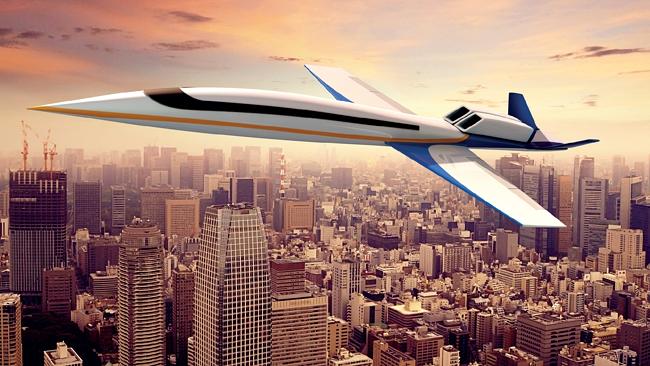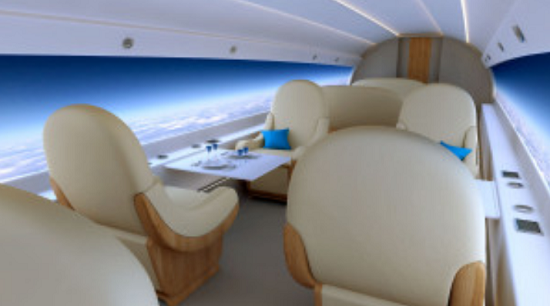Spike Aerospace is planning to launch a supersonic jet which have thin display screens embedded in its walls instead of cabin windows, a design they claim will not only add to the comfort of passengers but will also reduce drag on the plane.

The plane is advertised as the world's first supersonic business jet
According to the company’s official website, their design of micro-cameras and flat displays will solve some of the major problems windows add to a plane’s design, the additional needed structural support and the added weight being chief among these problems. Spike Aerospace plans to surround their aircraft with cameras, and then display the views of those cameras onto thin screens they will embed into the walls.
Passengers would be able to dim these screens or change the images they show, but they won’t be able to use them to check email, browse the Internet or otherwise interact with them, which is slightly limiting for a design that’s expected to cost around $80 million. The S-12 supersonic jet will also only carry 18 passengers, though Spike Aerospace does claim it will also be able to cut off a couple of hours of flight time: they say it will be able to fly from New York to London in as little as three or four hours, rather than six or seven. The design will apparently have a Mach 1.6 cruising speed, along with a Mach 1.8 maximum speed, statistics that beat the Boeing 777-300.

Interior of the proposed design
Still, there are safety concerns, which space and aerospace engineering expert Dr. Darren Ansell probably summed up best in a statement on BBC:
“If there was an accident how would you know which way the plane was facing, and where you had landed, when the cameras have failed?” said Ansell, adding that the absence of natural light might make flying in the plane “a bit like being in a tube.”
The S-512 jet design is not expected to launch for four more years, and other companies are also developing similar projects. Despite the limitations of these screens and the design, it’s certainly a project I’ll be following.
Source BBC
Advertisement





